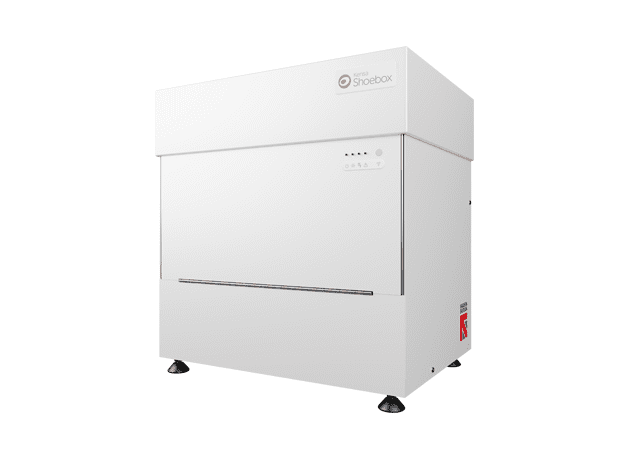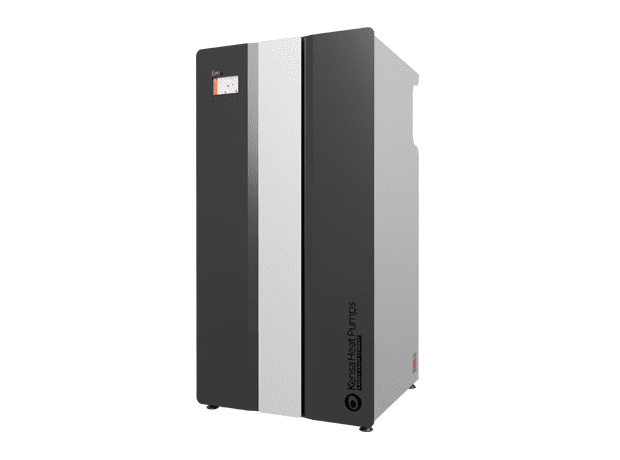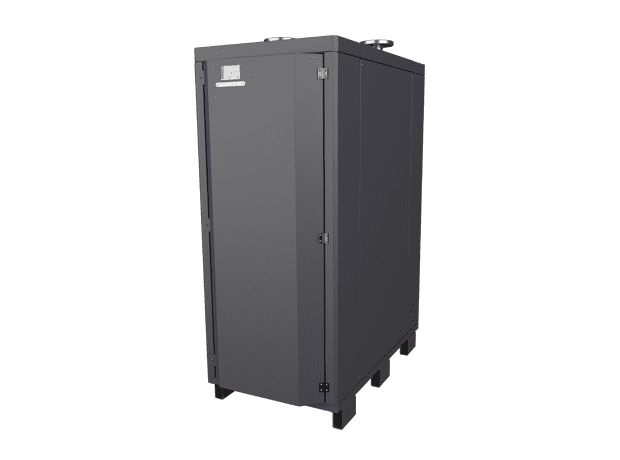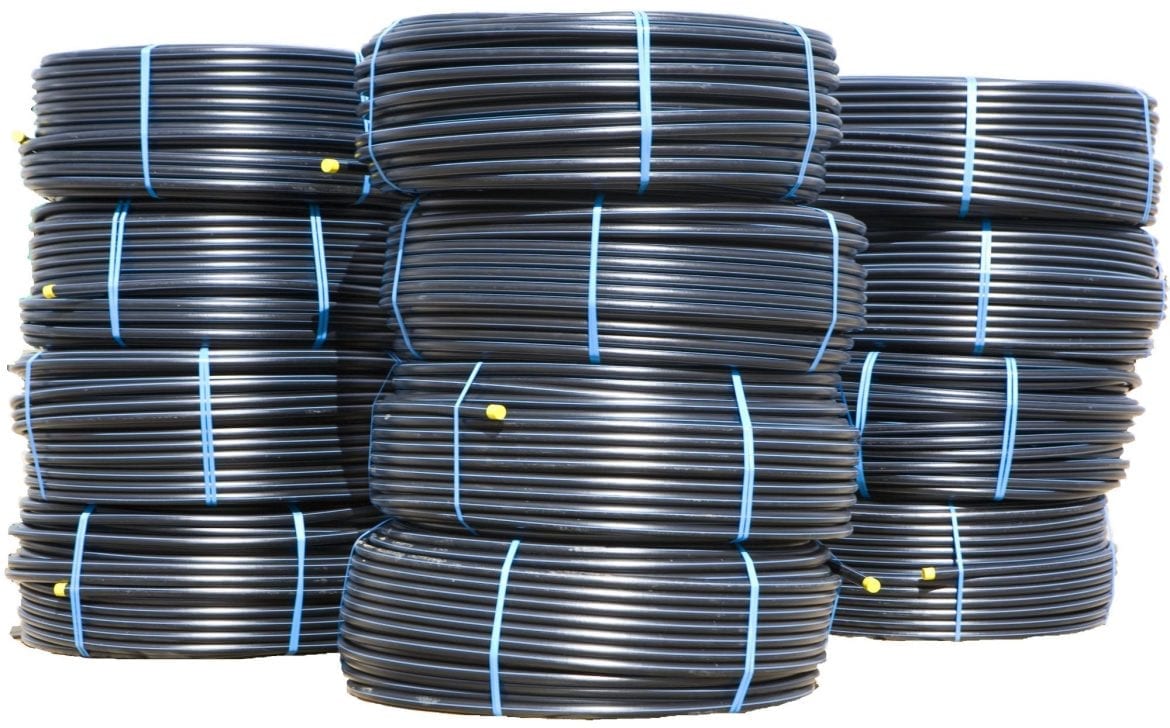There is an abundance of waste heat in society – thermal energy that would otherwise be wasted to the environment. Wouldn’t it be great if we could capture this wasted energy and recycle it?
This thermal energy is often created as a by-product of another process or activity, for example, the industrial cooling required to create semiconductors; process cooling in commercial settings, such as supermarkets or data centres; or cooling of habitable spaces through air-conditioning. City centre environments particularly provide copious amounts of waste heat, for example, from underground transport tunnels or electrical transmission. Whenever something is cooled, what you are actually doing is removing heat, and this heat has to go somewhere. We think this waste heat could be turned into a resource.
10% of all electricity generated in the UK is used in commercial air conditioning. This creates a huge amount of waste heat which is expelled into the surrounding air, raising the local air temperature, ironically increasing the need for air conditioning. Warmer summers, improved insulation and larger windows also drastically increase the need for cooling in modern buildings. And this problem is only going to get worse due to climate change.
Networked Heat Pumps
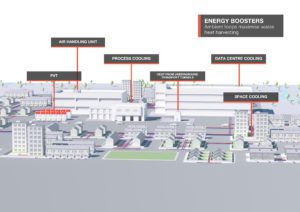

Traditionally, Ground Source Heat Pumps extract renewable energy from the ground via pipework buried in trenches or boreholes called Ground Arrays. In order to provide heat to numerous properties and multiple occupancy dwellings, Shared Ground Arrays are connected to individual Heat Pumps installed in multiple separate dwellings.
Networked Heat Pumps utilise heat energy from a number of renewable sources, including Shared Ground Arrays and waste heat, which can be recycled and used as an energy booster to enhance the efficiency of heating and cooling systems, instead of allowing it to be wasted into the atmosphere.
Networked Heat Pumps exchange heat with an Ambient Temperature Heat Network – a submerged closed loop of pipework containing a fluid circulating at around 5 to 25 degrees. There are no concerns about heat loss between the pipe and the ground.
Networked Heat Pumps can either provide heating – extracting heat from the Ambient Temperature Heat Network and thus cooling the loop a little – or cooling – transferring heat from the dwelling into the Ambient Temperature Heat Network and thus warming the loop a little. The exploitation of waste heat and other energy boosters can help maintain and even boost the temperature of the network ready to provide heating as demanded by the connected Networked Heat Pumps. Distributing at an ambient temperature maintains overall system efficiency through higher efficiency heating, higher efficiency cooling and lower distribution losses.
Networked Heat Pumps become more cost-effective with increasing scale, due to drilling fewer and deeper boreholes and unlocking economies of scale. Introduce waste heat and cooling capabilities into the equation, and the installation costs become even lower – because the same infrastructure can provide heating, cooling and recycling of heat, a smaller Ground Array is required, i.e. less boreholes.
Running the Ambient Temperature Heat Network at higher temperatures due to utilising waste heat, means that the Networked Heat Pumps have less work to do, consuming less electricity, bringing an uplift to their performance.
Low cost, low carbon cooling
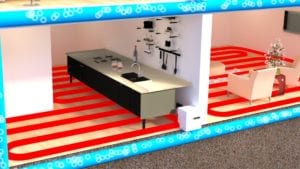

This type of system offers the opportunity to provide efficient and low carbon cooling, reducing energy demand for air conditioning. In lots of cases, we can utilise ‘passive cooling’, where the ground temperature allows cooling directly without the use of heat pumps. The by-product of extracting heat from the ground during the winter months is a large volume of pre-chilled ground (at temperatures of between 2-8*C), which is perfect for cooling. In heating only systems, this ground would naturally warm during the summer, ready for the next heating season. Passive cooling accelerates this process, increasing sustainability whilst providing extremely low cost (sometimes even free), low carbon cooling.
Where the demand for cooling is higher, this can initially be met by passive cooling, and as the ground warms up systems can switch to ‘active cooling’ where the heat pump further cools the natural temperature coming from the ground. This uses slightly more energy than passive cooling but delivers performance equivalent to full air conditioning with far lower energy consumption because the temperature coming from the ground is generally far cooler than the outside air temperature.
For example, air conditioning systems are often designed to run at 6*C – ground temperatures in early summer can provide this directly. Some cooling can be provided directly up to ground flow temperatures of 12*C. High cooling demands require active cooling in this zone. This is still much cooler than the 25-30*C air temperature typical of the summer months when cooling is required. Consequently, the heat pump has less work to do and consumes less electricity.
The heat removed from the properties by these types of cooling is captured and delivered into the ground. In traditional air conditioning systems it is discharged into the air and wasted, and actually makes the problem worse by increasing the local air temperatures. Even better, the heat that is reintroduced into the ground recharges it, in some cases charging it to higher temperatures than it started at. This improves the heat pump heating efficiency the following winter and we call this ‘inter-seasonal heat storage’.
The Ambient Temperature Heat Network acts like a giant heat battery providing a stable heating and cooling source all year round. In contrast, using the air as a source for heating and cooling is less efficient and uses more energy because larger fluctuations in air temperature (colder in winter, hotter in summer) mean air source heat pumps/air conditioners have more work to do to provide the required output temperature.
Balancing heating and cooling between commercial and residential properties
Larger Ambient Temperature Heat Networks connecting multiple buildings with a diverse mix of domestic and commercial uses create further opportunities for efficiency improvements.
For example, if you have a block of flats with retail space on the ground floor, such as a supermarket, then the heat byproducts of the supermarket refrigeration systems can assist the heating of the properties. The chilled water produced as a byproduct of delivering heating and hot water in the properties assists the refrigeration systems of the supermarkets. These diverse heating and cooling requirements form a symbiotic relationship beneficial to both applications.
In many modern commercial buildings, the demand for cooling can be significant, especially for glazed offices or server rooms. These buildings with high cooling demand will use active cooling where the heat pump hydraulic flows are reversed, generating chilled water (at 6°C to 12°C), providing cooling performance similar to a chiller or air conditioner.
Data centres and waste heat recapture


If you put your hand to the back of any computer or server you will feel a lot of dispelled heat; a room full of these requires significant cooling. Data centres are typically liquid-cooled. This involves passing this liquid through heat exchangers on the back of each computer (server stack). The temperature leaving the computers is 38-43oC to keep the computers at optimum temperature. Outside there is a combination of dry air coolers, evaporative coolers, and chillers which collectively discharge this heat into the surrounding air.
Rather than waste this energy to the air, the heat can be discharged into the ambient temperature heat network via passive or active cooling. When the temperature of the Ambient Loop reaches 20oC, (assuming that the waste heat is more than the heat demand of the connected properties), the pump would turn off, the ground cooling would stop and the other traditional higher energy cooling systems would kick in.
It is easy to predict the levels of waste heat available from the cooling of data centres, because 99% of the electricity used to run the computers ultimately ends up as heat, once it has performed its useful task. When you know the power consumption of the computers then you know the amount of heat available and the potential amount of waste heat available for utilisation.


